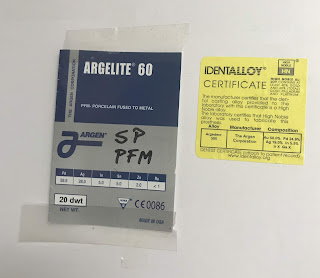Geriatric Patients and pulp vitality?
Usually when I clean out decay from a younger patients tooth and there is no apparent exposure, I assume everything will be OK in my patient's vital pulp. I may use Dycal and a liner but usually my patients tooth remains vital and doesn't require a root canal afterwards especially when the tooth was not symptomatic prior to it's filling.
This is not always the case for elderly patients. Often when cleaning out decay on older patients the decay extends to where the "nerve used to be". Fortunately as we age the pulp tends to get smaller and recede. It is able to do this because the odontoblasts in the pulp ( cells that manufacture dentin) gradually lay down secondary ( reparative dentin). This process can be a blessing since they didn't many more teeth would need root canals or extractions due to decay. Unfortunately this process comes with a price and that is the gradual lessening of pulpal vitality. To be "vital", pulps have to maintain an adequate blood supply. Capillaries enter the tooth through the apical foramen and need some room inside the tooth to exist in health. As teeth form more and more secondary dentin sometimes the space for capillaries narrows to the point where the pulp actually loses it's blood supply and the pulp becomes fibrous and less "alive".
Dentists may try to use a pulp tester to test the vitality of teeth with receded and calicified pulps, but o these tests are not always accurate (at least in my opinion). Often the status of the pulp in reality is unknown.Sometimes the teeth are still vital and some are nonvital; it's hard to tell for sure.
Sometimes fibrous avascular pulpal tissue can become infected since it has no blood supply to fight off bacteria that can find their way into the pulp and when this happens these teeth get abscessed and either require a root canal treatment or an extraction. When examining the radiographs of an octogenarian or a nonagenarian it is not uncommon to see many teeth with negligible space viable pulp tissue. These teeth have questionable vitality at best, but are not infected, at least as far as our radiographs can determine. They are at risk for developing abscesses in the future, but haven't yet shown any symptoms, such as apical bone loss, swelling or sensitivity to chewing.
Most conservative dentists will just leave these teeth alone if they do not require any significant dentistry. When these teeth do get decayed , the dentist must make a decision. Usually decay can be very deep, but no exposure of the pulp is observable. If a just a filling is required, no root canal is required , but still its best to warn the patient that the tooth may require a root canal in the future, due to diminished pulpal space and the proximity of the decay. Sometimes everything is fine for years to come, but other times these teeth can be observed to develop periapical radiolucencies visible on periapical X-rays. When these are observed, it means that the tooth has developed an infection of endodontic origin and needs a root canal or an extraction to get rid of the infection.
If an elderly person needs a crown or a bridge and has teeth with extremely small pulp space , they should be warned that after their dental work is completed a root canal may end up being needed in the future and sometimes a dentist may advise prophylactic endodontic treatment before crowning their tooth. This will ensure that no hole will have to be made in a perfectly good crown after it is cemented because their tooth needed a root canal. Sometimes some teeth have pulpal spaces that are so calcified that even the best endodonist can not negotiate or even find the canal(s) in the tooth.
The bottom line is that often there is no definitive solution for dealing with these teeth since as dentists we can be damned no matter what we do. Often when I clean out a deep cavity and I am suspicious about the vitality of the tooth I am working on, I place an interim filling or long term temporary crown on the tooth and wait and see what happens. If the tooth remains happy for 6 months or a year, I usually place a permanent restoration and advise the patient of the possibility that a future problem is possible down the road.
from Ask Dr. Spindel - http://lspindelnycdds.blogspot.com/2018/10/geriatric-patients-and-pulp-vitality.html - http://lspindelnycdds.blogspot.com/


Comments
Post a Comment